Fr. Brown’s Fall 2022 Reading List

Abide in the Heart of Christ: A 10-Day Personal Retreat with St. Ignatius Loyola
In Abide in the Heart of Christ, Rev. Joe Laramie, S.J., offers accessible wisdom from the foundations of Jesuit spirituality—St. Ignatius Loyola’s Spiritual Exercises—in a ten-day personal retreat that will help you encounter Christ, grow your relationship with him, and shape your heart.
Laramie is your guide through this accessible retreat into the heart of Jesus. Based on a structure and approach he developed as a retreat leader at White House Jesuit Retreat in St. Louis, Laramie introduces you to classic themes of the Christian life, including sin, forgiveness, and creation.
This book also helps you learn how to use key scripture passages to reflect on your own experiences. Each reflection includes teachings from the Spiritual Exercises and offers examples from Laramie’s own life. Reflection questions and activities guide you in further contemplation to help you see what’s in your heart, encounter Christ in your daily life, and live more fully in his love each day.
What We Owe The Future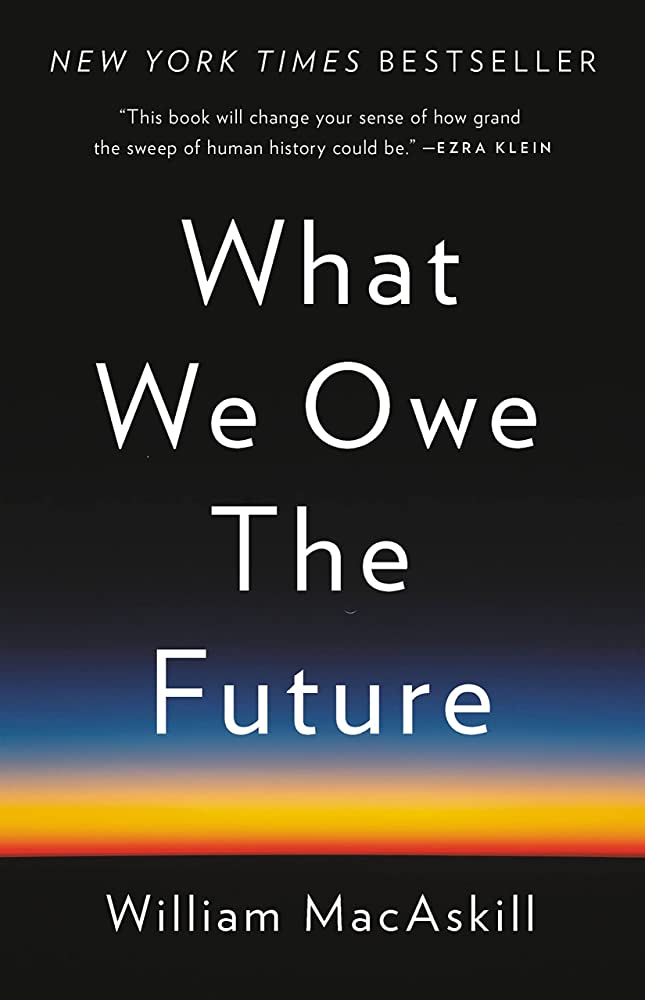
“This book will change your sense of how grand the sweep of human history could be,
where you fit into it, and how much you could do to change it for the better. It’s
as simple, and as ambitious, as that.”
—Ezra Klein
An Oxford philosopher makes the case for “longtermism” — that positively influencing the long-term future is a key moral priority of our time.
The fate of the world is in our hands. Humanity’s written history spans only five thousand years. Our yet-unwritten future could last for millions more — or it could end tomorrow. Astonishing numbers of people could lead lives of great happiness or unimaginable suffering, or never live at all, depending on what we choose to do today.
In What We Owe The Future, philosopher William MacAskill argues for longtermism, that idea that positively influencing the distant future is a key moral priority of our time. From this perspective, it’s not enough to reverse climate change or avert the next pandemic. We must ensure that civilization would rebound if it collapsed; counter the end of moral progress; and prepare for a planet where the smartest beings are digital, not human.
If we make wise choices today, our grandchildren’s grandchildren will thrive, knowing we did everything we could to give them a world full of justice, hope and beauty.
The Sum of Us: What Racism Costs Everyone and How We Can Prosper Together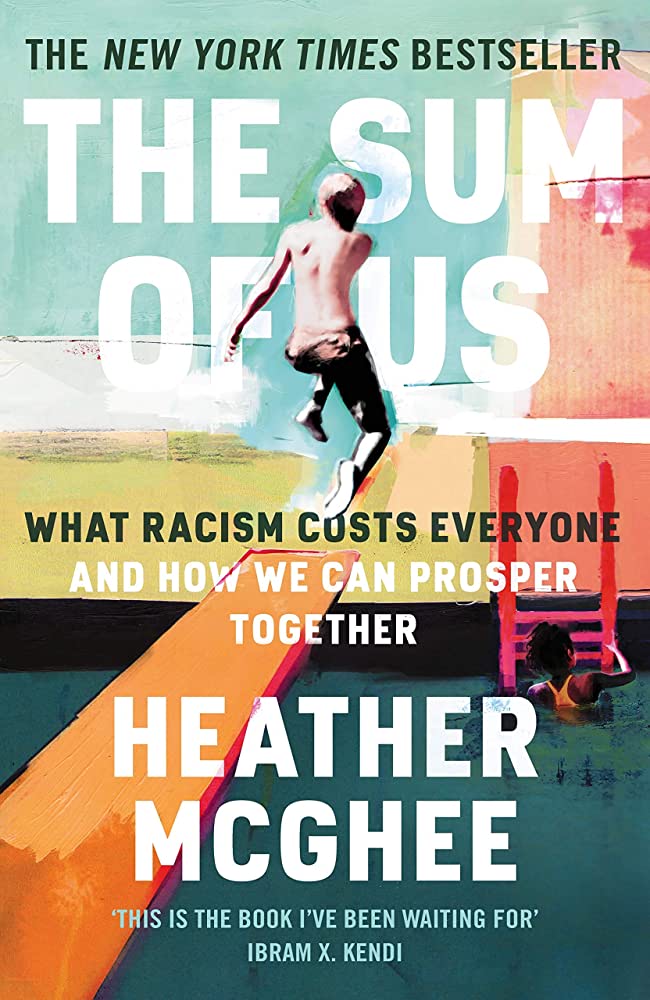
Heather McGhee’s specialty is the American economy—and the mystery of why it so often fails the American public. From the financial crisis of 2008 to rising student debt to collapsing public infrastructure, she found a root problem: racism in our politics and policymaking. But not just in the most obvious indignities for people of color. Racism has costs for white people, too. It is the common denominator of our most vexing public problems, the core dysfunction of our democracy and constitutive of the spiritual and moral crises that grip us all. But how did this happen? And is there a way out?
McGhee embarks on a deeply personal journey across the country from Maine to Mississippi to California, tallying what we lose when we buy into the zero-sum paradigm—the idea that progress for some of us must come at the expense of others. Along the way, she meets white people who confide in her about losing their homes, their dreams, and their shot at better jobs to the toxic mix of American racism and greed. This is the story of how public goods in this country—from parks and pools to functioning schools—have become private luxuries; of how unions collapsed, wages stagnated, and inequality increased; and of how this country, unique among the world’s advanced economies, has thwarted universal healthcare.
But in unlikely places of worship and work, McGhee finds proof of what she calls the Solidarity Dividend: the benefits we gain when people come together across race to accomplish what we simply can’t do on our own. The Sum of Us is not only a brilliant analysis of how we arrived here but also a heartfelt message, delivered with startling empathy, from a black woman to a multiracial America. It leaves us with a new vision for a future in which we finally realize that life can be more than a zero-sum game.
Ida B. The Queen: The Extraordinary Life and Legacy of Ida B. Wells
Journalist. Suffragist. Antilynching crusader. In 1862, Ida B. Wells was born enslaved
in Holly Springs, Mississip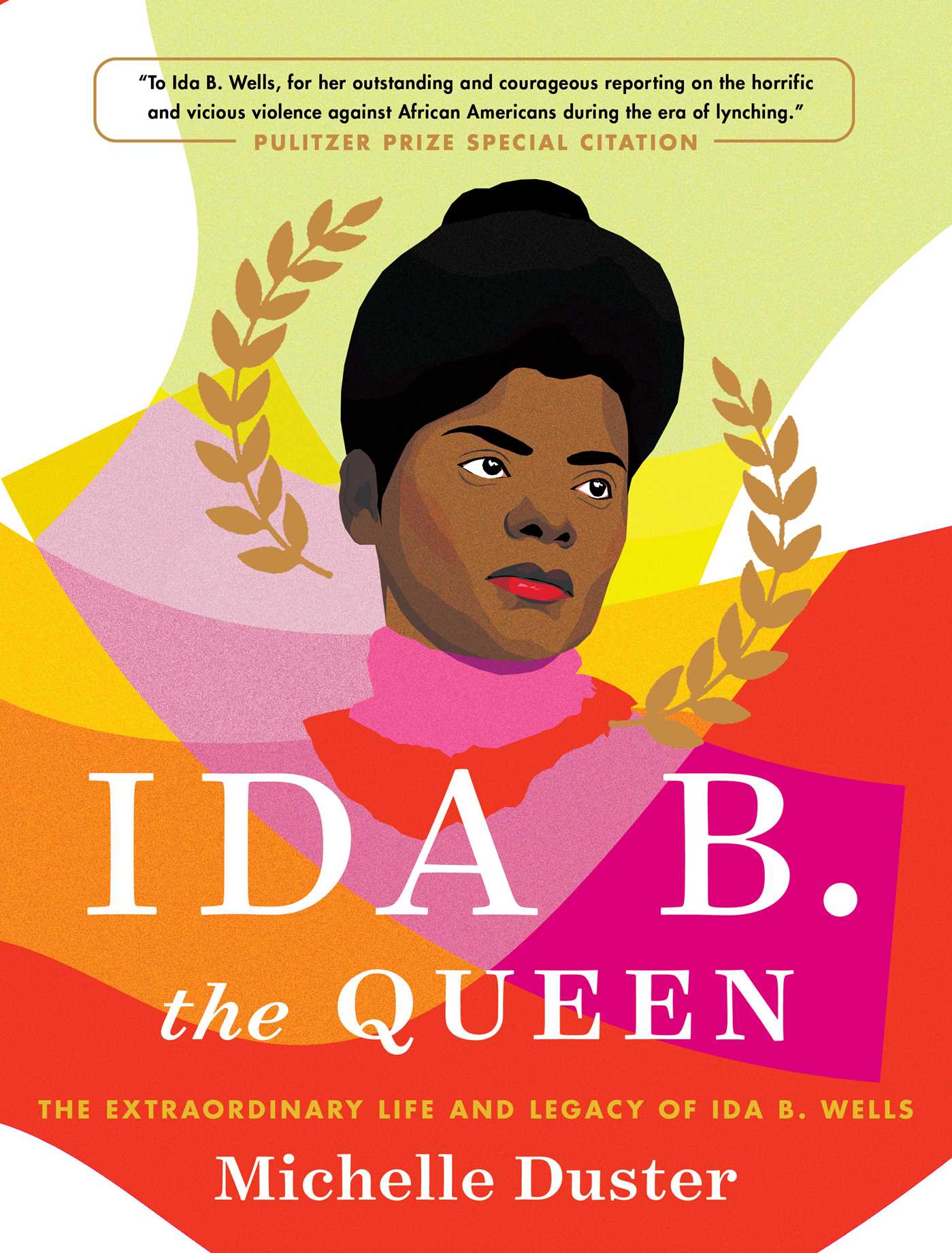 pi. In 2020, she won a Pulitzer Prize.
pi. In 2020, she won a Pulitzer Prize.
Ida B. Wells committed herself to the needs of those who did not have power. In the eyes of the FBI, this made her a “dangerous negro agitator.” In the annals of history, it makes her an icon.
Ida B. the Queen tells the awe-inspiring story of an pioneering woman who was often overlooked and underestimated—a woman who refused to exit a train car meant for white passengers; a woman brought to light the horrors of lynching in America; a woman who cofounded the NAACP. Written by Wells’s great-granddaughter Michelle Duster, this “warm remembrance of a civil rights icon” (Kirkus Reviews) is a unique visual celebration of Wells’s life, and of the Black experience.
A century after her death, Wells’s genius is being celebrated in popular culture by politicians, through song, public artwork, and landmarks. Like her contemporaries Frederick Douglass and Susan B. Anthony, Wells left an indelible mark on history—one that can still be felt today. As America confronts the unfinished business of systemic racism, Ida B. the Queen pays tribute to a transformational leader and reminds us of the power we all hold to smash the status quo.
The Spiritual Work of Racial Justice: A Month of Meditations with Ignatius of Loyola
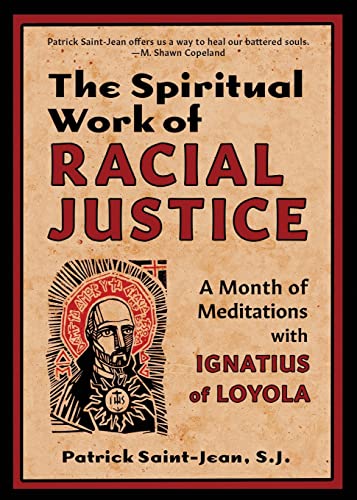 Patrick Saint-Jean, S.J., Psy.D., currently teaches in the psychology department at Creighton University in Omaha,
Nebraska, where he is also a psychotherapist. He enjoys jazz, traveling, and learning
new languages; and he plays the guitar, harmonica, and drums. He also likes a cup
of hot water in the morning.
Patrick Saint-Jean, S.J., Psy.D., currently teaches in the psychology department at Creighton University in Omaha,
Nebraska, where he is also a psychotherapist. He enjoys jazz, traveling, and learning
new languages; and he plays the guitar, harmonica, and drums. He also likes a cup
of hot water in the morning.
The Spiritual Work of Racial Justice: A Month of Meditations with Ignatius of Loyola uses Ignatius’s Spiritual Exercises as a framework for discussing the spiritual challenges of antiracism. Each of the Exercise’s four weeks are applied in practical ways to the work of antiracism, combining history, present-day events and data, the life and teaching of Ignatius, prayer, and guidance for personal reflection and journaling. An excellent resource for both group study and personal meditation.
The Whole Language: The Power of Extravagant Tenderness
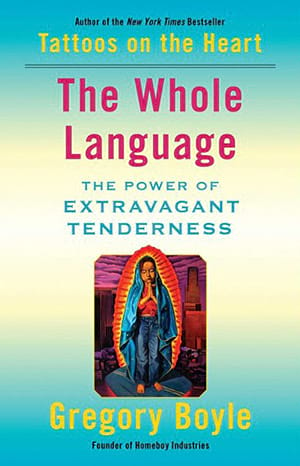 Gregory Boyle, the beloved Jesuit priest and author of the inspirational bestsellers
Tattoos on the Heart and Barking to the Choir, returns with a call to witness the transformative power of tenderness, rooted in
his lifetime of experience counseling gang members in Los Angeles.
Gregory Boyle, the beloved Jesuit priest and author of the inspirational bestsellers
Tattoos on the Heart and Barking to the Choir, returns with a call to witness the transformative power of tenderness, rooted in
his lifetime of experience counseling gang members in Los Angeles.
Over the past thirty years, Gregory Boyle has transformed thousands of lives through his work as the founder of Homeboy Industries, the largest and most successful gang-intervention program in the world. Boyle’s new book, The Whole Language, follows the acclaimed bestsellers Tattoos on the Heart, hailed as an “astounding literary and spiritual feat” (Publishers Weekly) that is “destined to become a classic of both urban reportage and contemporary spirituality” (Los Angeles Times), and Barking to the Choir, deemed “a beautiful and important and soul-transporting book” by Elizabeth Gilbert, and declared by Ann Patchett to be “a book that shows what the platitudes of faith look like when they’re put into action.”
In a community struggling to overcome systemic poverty and violence, The Whole Language shows how those at Homeboy Industries fight despair and remain generous, hopeful, and tender. When Saul was thirteen years old, he killed his abusive stepfather in self-defense; after spending twenty-three years in juvenile and adult jail, he enters the Homeboy Industries training and healing programs and embraces their mission. Declaring, “I’ve decided to grow up to be somebody I always needed as a child,” Saul shows tenderness toward the young men in his former shoes, treating them all like his sons and helping them to find their way. Before coming to Homeboy Industries, a young man named Abel was shot thirty-three times, land
ing him in a coma for six months followed by a year and a half recuperating in the hospital. He now travels on speaking tours with Boyle and gives guided tours around the Homeboy offices. One day a new trainee joins Abel as a shadow, and Abel recognizes him as the young man who had put him in a coma. “You give good tours,” the trainee tells Abel. They both have embarked on a path to wholeness.
Boyle’s moving stories challenge our ideas about God and about people, providing a window into a world filled with fellowship, compassion, and fewer barriers. Bursting with encouragement, humor, and hope, The Whole Language invites us to treat others—and ourselves—with acceptance and tenderness.
Psalms and Consolations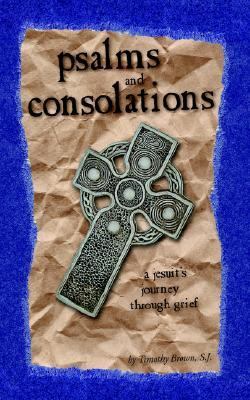
This book grew out of the overwhelming response requesting a companion volume to Father Brown’s Psalms and Compassions: A Jesuit’s Journey through Cancer. In this volume on bereavement and grief, Father Brown again turns to the Book of Psalms for solace. Included are prayers, homilies and reflections meant to help all who are finding their way through grief. This book grew out of the overwhelming response requesting a companion volume to Father Brown’s previous book, Psalms and Compassions: A Jesuits Journey through Cancer. In this volume on bereavement and grief, Father Brown again turning to the Book of Psalms for solace.
The Black Butterfly: The Harmful Politics of Race and Space in America
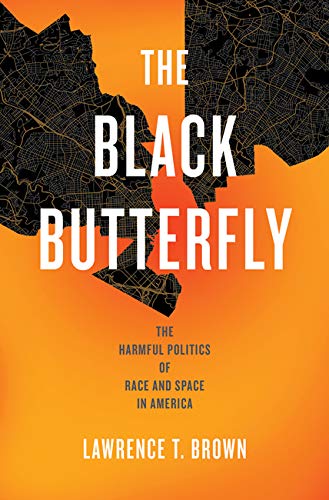 The best-selling look at how American cities can promote racial equity, end redlining,
and reverse the damaging health- and wealth-related effects of segregation.
The best-selling look at how American cities can promote racial equity, end redlining,
and reverse the damaging health- and wealth-related effects of segregation.
The world gasped in April 2015 as Baltimore erupted and Black Lives Matter activists, incensed by Freddie Gray
’s brutal death in police custody, shut down highways and marched on city streets. In The Black Butterfly—a reference to the fact that Baltimore’s majority-Black population spreads out like a butterfly’s wings on both sides of the coveted strip of real estate running down the center of the city—Lawrence T. Brown reveals that ongoing historical trauma caused by a combination of policies, practices, systems, and budgets is at the root of uprisings and crises in hypersegregated cities around the country.
Putting Baltimore under a microscope, Brown looks closely at the causes of segregation, many of which exist in current legislation and regulatory policy despite the common belief that overtly racist policies are a thing of the past. Drawing on social science research, policy analysis, and archival materials, Brown reveals the long histor
y of racial segregation’s impact on health, from toxic pollution to police brutality. Beginning with an analysis of the current political moment, Brown delves into how Baltimore’s history influenced actions in sister cities such as St. Louis and Cleveland, as well as Baltimore’s adoption of increasingly oppressive techniques from cities such as Chicago.
But there is reason to hope. Throughout the book, Brown offers a clear five-step plan for activists, nonprofits, and public officials to achieve racial equity. Not content to simply describe and decry urban problems, Brown offers up a wide range of innovative solutions to help heal and restore redlined Black neighborhoods, including municipal reparations. Persuasively arguing that, since urban apartheid was intentionally erected, it can be intentionally dismantled, The Black Butterfly demonstrates that America cannot reflect that Black lives matter until we see how Black neighborhoods matter.
Saving Us: A Climate Scientist’s Case for Hope and Healing in a Divided World
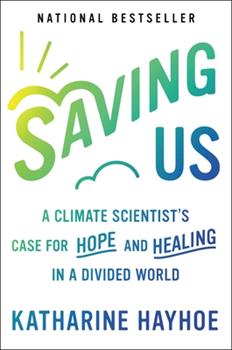
United Nations Champion of the Earth, climate scientist, and evangelical Christian Katharine Hayhoe changes the debate on how we can save our future.
Called “one of the nation’s most effective communicators on climate change” by The New York Times, Katharine Hayhoe knows how to navigate all sides of the conversation on our changing planet. A Canadian climate scientist living in Texas, she
negotiates distrust of data, indifference to imminent threats, and resistance to proposed solutions with ease. Over the past fifteen years Hayhoe has found that the most important thing we can do to address climate change is talk about it—and she wants to teach you how.
In Saving Us, Hayhoe argues that when it comes to changing hearts and minds, facts are only one part of the equation. We need to find shared values in order to connect our unique identities to collective action. This is not another doomsday narrative about a planet on fire. It is a multilayered look at science, faith, and human psychology, from an icon in her field—recently named chief scientist at The Nature Conservancy.
Drawing on interdisciplinary research and personal stories, Hayhoe shows that small conversations can have astonishing results. Saving Us leaves us with the tools to open a dialogue with your loved ones about how we all can play a role in pushing forward for change.
Rough Sleepers
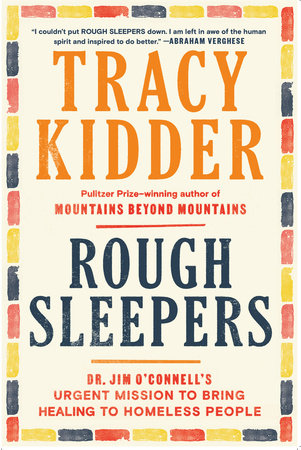
Tracy Kidder has been described by The Baltimore Sun as a “master of the nonfiction narrative.” In Rough Sleepers, Kidder shows how one person can make a difference, as he tells the story of Dr. Jim O’Connell, a gifted man who invented ways to create a community of care for a city’s unhoused population, including those who sleep on the streets—the “rough sleepers.”
When Jim O’Connell graduated from Harvard Medical School and was nearing the end of his residency at Massachusetts General Hospital, the chief of medicine made a proposal: Would he defer a prestigious fellowship and spend a year helping to create an organization to bring health care to homeless citizens? Jim took the job because he felt he couldn’t refuse. But that year turned into his life’s calling. Tracy Kidder spent five years following Dr. O’Connell and his colleagues as they served their thousands of homeless patients. In this illuminating book we travel with O’Connell as he navigates the city, offering medical care, socks, soup, empathy, humor, and friendship to some of the city’s most endangered citizens. He emphasizes a style of medicine in which patients come first, joined with their providers in what he calls “a system of friends.”
Much as he did with Paul Farmer in Mountains Beyond Mountains, Kidder explores how a small but dedicated group of people have changed countless lives by facing one of American society’s difficult problems instead of looking away.
The Hidden Curriculum
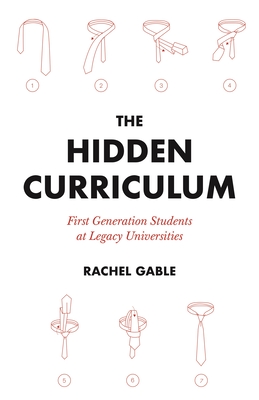
College has long been viewed as an opportunity for advancement and mobility for talented
students regardless of background. Yet for first generation students, elite universities
can often seem like bastions of privilege, with unspoken academic norms and social
rules. The Hidden Curriculum draws on more than one hundred in-depth interviews with
students at Harvard and Georgetown to offer vital lessons about the challenges of
being the first in the family to go to college, while also providing invaluable insights
into the hurdles that all undergraduates face.
As Rachel Gable follows two cohorts of first generation students and their continuing
generation peers, she discovers surprising similarities as well as striking differences
in their college experiences. She reveals how the hidden curriculum at legacy universities
often catches first generation students off guard, and poignantly describes the disorienting
encounters on campus that confound them and threaten to derail their success. Gable
shows how first-gens are as varied as any other demographic group, and urges universities
to make the most of the diverse perspectives and insights these talented students
have to offer.
The Hidden Curriculum gives essential guidance on the critical questions that university
leaders need to consider as they strive to support first generation students on campus,
and demonstrates how universities can balance historical legacies and elite status
with practices and policies that are equitable and inclusive for all students.
Tales of Literacy for the 21st Century - The Literary Agenda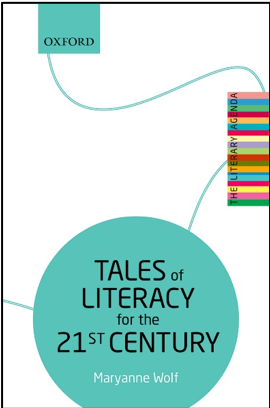
The Literary Agenda is a series of short polemical monographs about the importance
of literature and of reading in the wider world and about the state of literary education
inside schools and universities. The category of "the literary" has always been contentious.
What is clear, however, is how increasingly it is dismissed or is unrecognised as
a way of thinking or an arena for thought. It is sceptically challenged from within,
for example, by the sometimes rival claims of cultural history, contextualized explanation,
or media studies. It is shaken from without by even greater pressures: by economic
exigency and the severe social attitudes that can follow from it; by technological
change that may leave the traditional forms of serious human communication looking
merely antiquated. For just these reasons this is the right time for renewal, to start
reinvigorated work into the meaning and value of literary reading.
Tales of Literacy for the 21st Century wrestles with critical, timely questions for
21st-century society. How does literacy change the human brain? What does it mean
to be a literate or a non-literate person in the present digital culture: for example,
what will be lost in the present reading brain, and what will be gained with different
mediums than print? What are the consequences of a digital reading brain for the literary
mind and for writing itself? Can knowledge about the reading brain and advances in
technology offer new forms of literacy and new forms of knowledge to the peoples in
remote regions of the world who would never otherwise become literate? By using both
research from cognitive neuroscience, psycholinguistics, child development, and education,
and considering literary examples from world literature, Maryanne Wolf plots a course
that seeks to preserve the deepest forms of reading from the past, while developing
the cognitive skills necessary for this century's next generation.
The Bill of Obligations - The Ten Habits of Good Citizens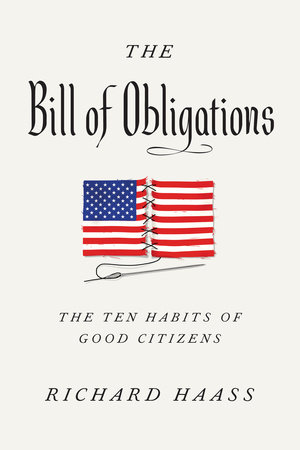
The United States faces dangerous threats from Russia, China, North Korea, Iran, terrorists,
climate change, and future pandemics. The greatest peril to the country, however,
comes not from abroad but from within, from none other than ourselves. The question
facing us is whether we are prepared to do what is necessary to save our democracy.
The Bill of Obligations is a bold call for change. In these pages, New York Times
bestselling author Richard Haass argues that the very idea of citizenship must be
revised and expanded. The Bill of Rights is at the center of our Constitution, yet
our most intractable conflicts often emerge from contrasting views as to what our
rights ought to be. As former Supreme Court Justice Stephen Breyer pointed out, “Many
of our cases, the most difficult ones, are not about right versus wrong. They are
about right versus right.” The lesson is clear: rights alone cannot provide the basis
for a functioning, much less flourishing, democracy.
But there is a cure: to place obligations on the same footing as rights. The ten obligations
that Haass introduces here are essential for healing our divisions and safeguarding
the country’s future. These obligations reenvision what it means to be an American
citizen. They are not a burden but rather commitments that we make to fellow citizens
and to the government to uphold democracy and counter the growing apathy, anger, selfishness,
division, disinformation, and violence that threaten us all. Through an expert blend
of civics, history, and political analysis, this book illuminates how Americans can
rediscover and recover the attitudes and behaviors that have contributed so much to
this country’s success over the centuries.
As Richard Haass argues, “We get the government and the country we deserve. Getting
the one we need, however, is up to us.” The Bill of Obligations gives citizens across
the political spectrum a plan of action to achieve it.
The January 6th Report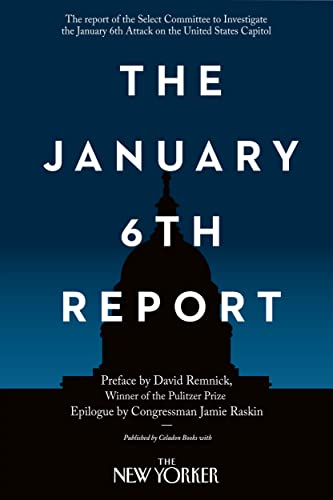
Celadon Books and The New Yorker present the report by the Select Committee to Investigate
the January 6th attack on the United States Capitol.
On January 6, 2021, insurgents stormed the U.S. Capitol, an act of domestic terror
without parallel in American history, designed to disrupt the peaceful transfer of
power. In a resolution six months later, the House of Representatives called it "one
of the darkest days of our democracy," and established a special committee to investigate
how and why the attack happened.
Celadon Books, in collaboration with The New Yorker, presents the committee's final
report, the definitive account of January 6th and what led up to it, based on more
than a year of investigation by nine members of Congress and committee staff, with
a preface by David Remnick, the editor of The New Yorker and a winner of the Pulitzer
Prize, and an epilogue by Congressman Jamie Raskin of Maryland, a member of the committee.